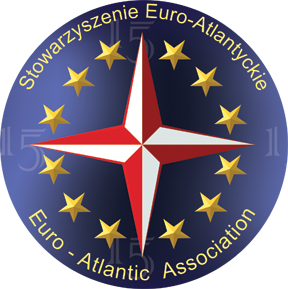Tactical Nuclear Weapons in Europe. Before the NATO summit in Chicago
Komentarz Janusza Onyszkiewicza, Przewodniczącego Rady Wykonawczej SEA, przed szczytem NATO w Chicago.
For many years now there has been a trend toward bilateral US-Russian reductions in strategic nuclear weapons. This has been motivated, at least partly, by a desire to avoid a costly arms race which could not in any case secure a clear military superiority for either side.
The intention to make further reductions was expressed again recently in the bilaterally ratified New START agreement concluded between the USA and Russia and this treaty must of course be welcomed.
However, while the treaty sets out the maximum number of strategic missiles and nuclear warheads allowed on each side and provides for a whole range of means of verification and mechanisms ensuring transparency, the arsenal of American and Russian tactical nuclear weapons designed to secure superiority or success in a limited military theatre of war remains outside of any control or even transparency. The need to address this issue has already been indicated in various important political declarations and some prominent members of international political community have stated that “no issue in the area of European military security is more important or more vexed than that of nonstrategic (or tactical) nuclear weapons”
The number of these weapons, although reduced in comparison with the Cold War period, is not at all insignificant. In Europe only the US and Russia have them, since France and the UK consider their nuclear capabilities as entirely strategic in nature. There are no official data but, according to reliable estimates there may be around 500 such weapons in the state of operational readiness and another 500 in storage in the USA, while the corresponding figures for Russia are 2,076 and 3,400 respectively. According to the same sources, around 200 American atomic bombs are located in several army bases in Turkey, Italy, the Netherlands, Belgium and Germany. As regards Russian tactical nuclear weapons, their location is unknown, although it is thought that a majority are currently stored or deployed in the European part of Russia, possibly including in the Kaliningrad Region.
In my view, it would be unrealistic to expect that these weapons can be completely eliminated in Europe in the short-term. The main problem is that Russia is still very much for maintaining a military balance with NATO in Europe and tactical nuclear weapons are, according to them, essential to offset NATO’s superiority in conventional forces.
In this situation the only way forward is to go for some additional confidence-building measures and greater transparency, trying at the same time to reduce the threat of uncontrolled use of nuclear weapons or their appropriation by non-state, criminal or terrorist groups.
So, what can be done? A valuable first step would be the setting up of a process designed to end with official declarations by the USA and Russia regarding the number and location of tactical nuclear weapons in Europe, or at least in those areas along the border between NATO and Russia. This would also need to include countries situated geographically between NATO and Russia, a point that is especially important given the rumours that Alexander Lukashenka is already offering Belarusian territory for storage and deployment of Russian nuclear weapons.
Next, a system of verification of the declared data on the number and location of these weapons would need to be worked out.
Third, one could consider an exchange of information regarding systems of security and protection of weapons in storage in order to improve their impregnability to terrorist or criminal groups.
Finally, based on the openness of the information shared on the location of tactical nuclear weapons, it would be desirable to begin negotiations aimed at reallocating storage depots containing these armaments away from Central and Eastern Europe, including from Germany, and, as a compensation, from some European part of the Russian Federation.
Of course, any such agreement would not apply to strategic weapons covered by the New START treaty. The New START treaty currently being implemented is an important trust-building factor in the NATO-Russia relationship. An agreement concerning tactical nuclear weapons could be its natural and politically highly significant extension.
Establishing a zone free of tactical nuclear weapons between NATO and Russia and across at least some of both NATO and Russian territory, could become yet another step towards reducing mutual distrust. A treaty of this type would place Russia in an even stronger position in the context of European security and could be an important element of the new European arms control system and confidence-building environment which is in any case needed to replace the no-longer legally binding CFE treaty. Possible inclusion of Germany in the aforementioned zone would also meet the postulate put forward by the Germans to remove nuclear weapons from the territory of that country. However, any such move would have to be compensated by including a relatively large part of the Russian Federation in that zone.
The measures I have suggested would improve security for everyone in Europe. At its summit in Chicago, NATO leaders should signal their willingness and desire to move in this direction.
Janusz Onyszkiewicz
Przewodniczący Rady Wykonawczej SEA
The text reflects the outcome of debates at the Euro-Atlantic Association (Poland) and can be found on the website of the European Leadership Network www.europeanleadershipnetwork.org






Sorry, the comment form is closed at this time.